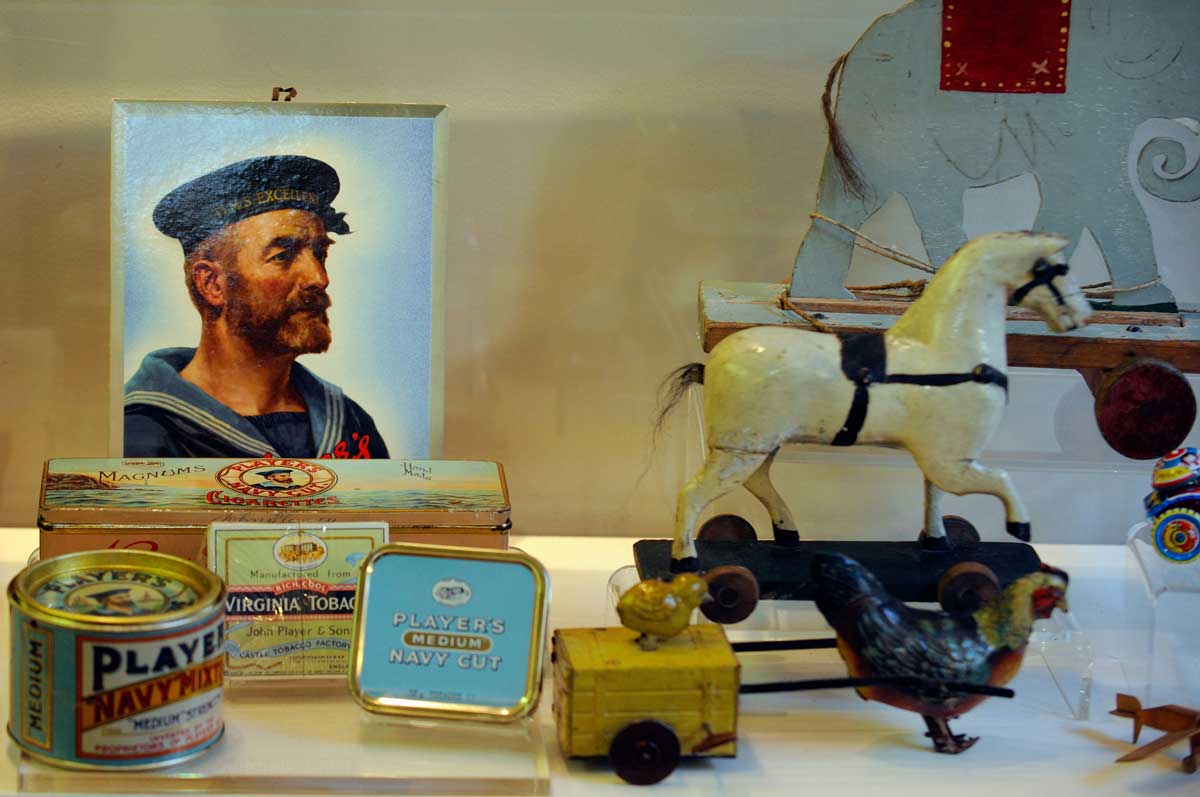The Lure of the Local - 4 minutes read

I recently visited a local history museum in a small English town. It does not exactly matter where; there are some features that all such museums have in common. If you think of one you know, you are probably imagining a place much like this. As I wandered through the quiet corridors of neatly arranged exhibits, I counted up how many similar museums I had visited and began to think about what special places they are.
If you recognise the type of town museum I mean, you will know just what kind of displays it boasts. There will always be cases of assorted Roman and Anglo-Saxon stuff: tweezers, strings of beads, pins and brooches, anything not quite important enough to be claimed by a bigger museum. There will be stones from a ruined abbey – there is always a ruined abbey somewhere nearby – looking to the untrained eye like mere lumps of rock, until the caption explains where they came from. Then suddenly a ghost church will appear before the visitor’s imagination, with this lump of stone at the top of one of its soaring arches – bigger than any building in the modern town, perhaps the reason the town exists at all, but only surviving now in these relics in the museum.
Then there will be recreations of old shops, anything from miniature models to a full-size mock-up, a reminder of the days when the town had a plethora of grocers and ironmongers and haberdashers. The paraphernalia of these trades, laid out and carefully labelled, is as alien to visitors now as tools from an Iron Age grave. Perhaps one of those businesses might have done well enough to be taken over by a multinational and lose its local name, but it lives on in this museum, proud of any local success, which loyally documents its workers’ memories of factory outings and Christmas festivities.
In another case there will be pieces of regalia, mayoral maces and silver cups, the gifts of long-dead municipal dignitaries. They may not be much to look at, but each one has a story to tell: each, probably, is the small token of a lifetime of service to the community. The names of their donors are placed on record here as they may be kept alive more tangibly elsewhere in the town, in the almshouses and charities and schools they founded. The portraits of these worthies will hang on the wall close by, with their badges of office and their endearingly homely, ordinary faces.
What else? A neat sampler; a collection of model soldiers; taxidermy from a naturalist’s study; farming equipment found in somebody’s garden. Touches of whimsy: a place where schoolchildren (and adults, when no one else is looking) can dress up in a Cavalier’s hat or a Victorian bonnet, laugh at themselves in the mirror and wonder for a moment what it would be like to wear such a clumsy thing every day.
The everyday – that is the charm of all this. If any of these objects were unusual, they would be kept somewhere else, in some grander museum; they are here precisely because they are common, and it is because they are common that they are precious. A museum like this is a treasure house of the ordinary, where the material of everyday life is gathered up and cherished. Its Roman pins and workers’ memories tell local versions of a larger story, giving individual life and colour to the abstractions of history.
And, of course, we should not forget the people who staff these places – volunteers, mostly – who know their collections like the contents of their own cupboards and tend them with care and love. Tourist after tourist, school group after school group, these staff do the hard work of communicating history to audiences who might think it has nothing to do with them. They offer a collective story for the town, a shared identity, as ready to be adopted by newcomers to the place, or those who are just passing through, as by residents whose families have been there for generations.
As town centres suffer and local services struggle to survive, we should cherish these little museums, faithful and unsung guardians of their community’s history. They are easy to overlook, to undervalue – even to laugh at as old-fashioned and provincial. But what’s wrong with being provincial, when every place, however small, has a story worth telling? We ought to sing their praises; we would miss them if they were gone.
Eleanor Parker is Lecturer in Medieval English Literature at Brasenose College, Oxford and writes a blog at aclerkofoxford.blogspot.co.uk.